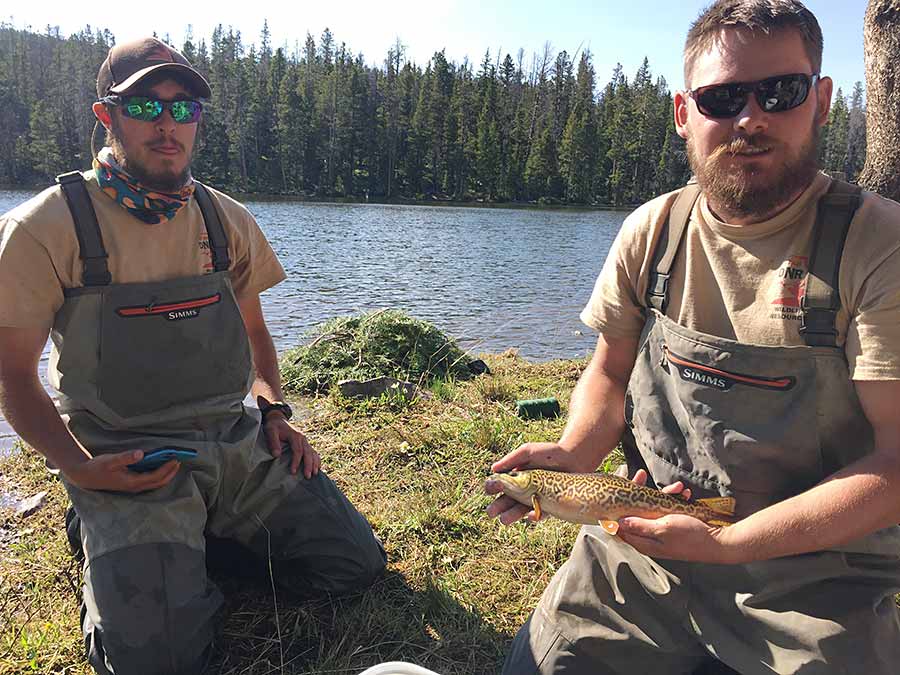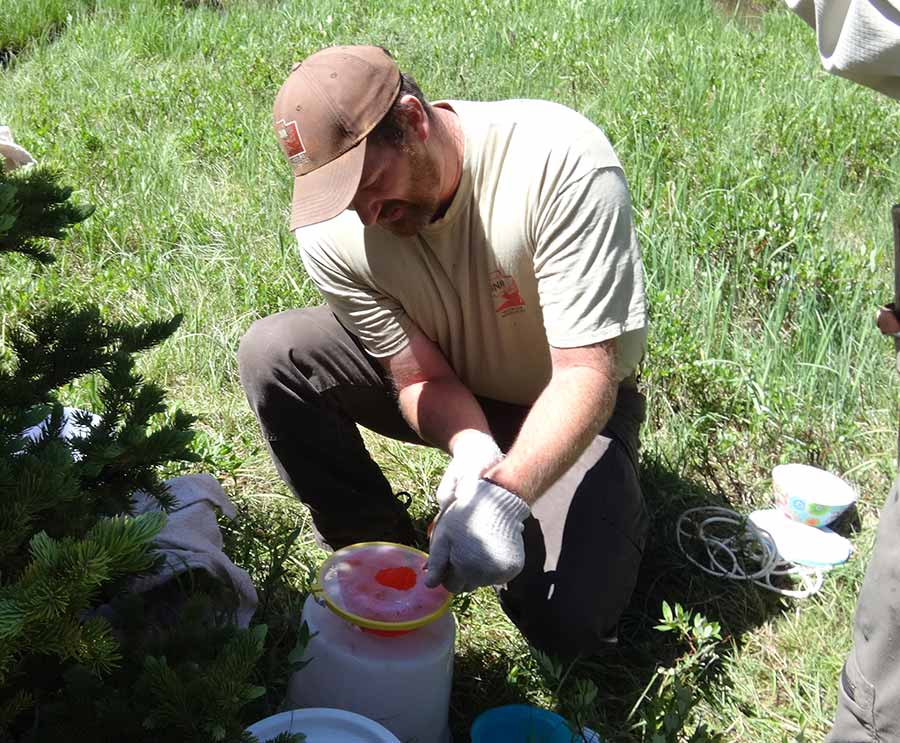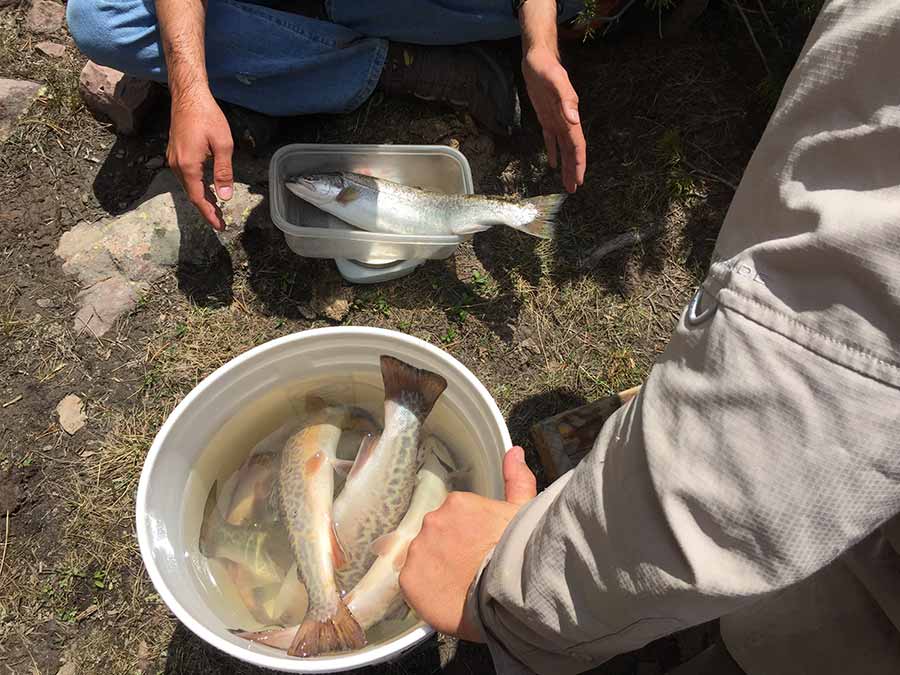Middle Fork Sheep Creek: a success story in the making
Restoring native trout fisheries while providing a diverse fishing experience.
By Bryan Engelbert
DWR cutthroat trout biologist
As a cutthroat trout biologist for the Utah Division of Wildlife Resources (DWR), a big part of my job is balancing conservation of our native trout species with providing an excellent sport fishery for our anglers.
My personal and career interests have brought me to trout waters both near and far, from researching and conserving Redband trout, Westslope cutthroat trout, and Bull trout in the Idaho panhandle, to scoping my next high-mountain lake adventure in Utah's prized Boulder Mountain area, to saving native brook trout and its habitat in the eastern U.S.
In my current job, I find myself killing the very fish I was once tasked with saving in other areas of the country. In many cases that I've seen across the Western U.S., nonnative trout species tend to dominate entire drainages. In lots of these cases, we continue to pay for the sins that our ancestors committed when we brought eastern brook trout with us as we colonized the West. These brook trout thrived all-too-well in their newfound habitat, as most Rocky Mountain streams provide an abundance of cold, clear water and far superior spawning habitat than what exists through much of their native home range.
Many of our mountain streams are teeming with stunted brook trout populations, where we often see mature individuals at just four inches long! Unfortunately, these new residents have an advantage simply due to high abundances and a slightly more aggressive attitude. In many of these streams, our native cutthroat trout become functionally extirpated (eliminated) from a drainage within 20–25 years after brook trout introduction takes place.
Other introductions of nonnative cutthroat trout and rainbow trout have dealt our native fish another blow from both competition and genetics loss through hybridization. As a prime example, our native Colorado River cutthroat trout (CRCT) inhabits about 14 percent of its former occupied range. Due to this documented loss, CRCT have been reviewed twice to be listed under the Endangered Species Act in the last 17 years. Fisheries professionals in Colorado, Wyoming and Utah had foresight to pre-emptively act, and the DWR and our sister agencies in those states came together to form an agreement that set forth definitions, guidelines and objectives to protect and restore CRCT. Ultimately, the results of this action have kept this species under state management. Remaining under state management authority is important, as it allows us to retain flexibility, make quick decisions regarding management, and utilize outside-the-box methods for restoration that otherwise might not be available to us.
One project that I want to highlight is our ongoing efforts to restore native fish to the Middle Fork Sheep Creek (MFSC) drainage of the North Slope Uinta Mountains. For those of you who know where Spirit Lake is in western Daggett County, you've got it! Fieldwork for this project started in 2012, when the DWR applied a piscicide known as rotenone to five lakes within the drainage to eradicate invasive trout species. We completed a second rotenone treatment (2013), and DWR standard protocol is to apply a third if any target fish are killed in the second treatment, which in this case included only the MFSC below Spirit Lake, and was completed in 2014.
Following the treatment in 2013–2014, the lakes were restocked with compatible fish (grayling and sterile tiger trout) while the DWR is currently pursuing a pure, North Slope Uinta CRCT brood. I've spent many man-hours with this part! It is difficult to get many progeny from remote, hard-to-capture, seven-inch trout. In 2015, one lake also received a 550-fish (I'll keep the mystery and allow you to find them!) transplant, and lower MFSC a 270-fish transplant of CRCT from the North Fork of Sheep Creek. We are utilizing some of these transplanted CRCT as broodstock this spring. In 2015 and 2016, we surveyed all lakes to assess how well the fishery has rebounded, post-treatment.
In summary, almost all lakes are doing very well in terms of growth, survival and providing a diverse fishing experience. Two lakes needed to be restocked, with Judy Lake receiving a restock of tiger trout in August 2015, and Columbine Lake will receive tiger trout later this summer. Summit Lake's grayling appear to have outstanding growth, and I look forward to visiting this lake next year with my TFO 3-weight fly rod! Gayle, Hidden and Lost lakes are teeming with healthy populations of tigers with average sizes at or above 12 inches. Jessen and Tamarack lakes have numerous tiger trout larger than our 18-inch measuring board, yet these fish have two or three summers of lifespan left! The fat content on these fish is outstanding. These fish are flat-out impressive!
I would also encourage you to check out the Middle Fork Sheep Creek stream above and below Spirit Lake, where I've observed fruits of our labors with tigers and CRCT hiding in a hole near you. If the fish aren't biting, I'm sure the mosquitoes will be! I'm also excited at both current and future prospects of seeing much larger fish than this area used to produce. CRCT will not overpopulate and stunt like brook trout populations do. We will continue to expand CRCT range in this drainage as the fish become available.


















